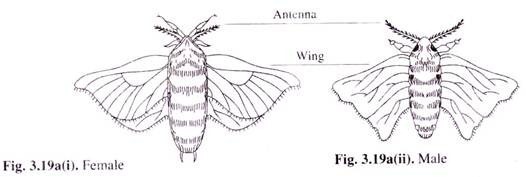
#Bombyx mori life cycle pdf
#Bombyx mori life cycle skin
Their bodies become slightly yellow and their skin becomes tighter to enter the pupa phase of their lifestyle after they have molted four times, they enclose themselves in a cocoon made up of raw silk produced by the salivary glands. It is the size of a small cotton ball and is made of a single thread of silk. In this stage, silkworms spin a protective cocoon around itself. They feed on mulberry leaves and consume a large amount of these leaves for around 30 days before going to the next stage. In this stage of silkworms, the growth happens. This procedure happens once in every year.Ī hairy silkworm arises after the eggs crack. In the springtime, the eggs hatch due to the warmth in the air. A female moth lays more than 350 eggs at a time. The egg is laid by a female moth which is mostly the size of small dots. The egg is the first stage of the life cycle of the silkworm. The life cycle of the silkworm has been explained below. The silk yarn (thread) is obtained from the silk moth’s cocoon. A protective layer is formed by the several caterpillars around the pupa and this covering is known as the cocoon.

After that it swings its head, spinning a Fiber made up of protein and that becomes silk Fiber. A weave is netted around by the silkworm to hold itself in the pupa stage. The silkworms feed on mulberry leaves and result in the formation of the pupa.

The caterpillar or larvae are hatched from the eggs of the silk moth. The life cycle of the silk moth starts when a female silk moth lays eggs. history of silk The life cycle of silkworm Sericulture is the term associated with the rearing of silkworms. The most common silk moth that is used for producing silk is Mulberry silk. New development, as well as technological advancement, has enabled manufacturers to produce different types of silk from different silkworms based on texture and luster. A long time ago, silk was exported to several parts of the world through trade. silkwormĪround 3500 BC, silk was discovered in China. Silkworm is used for spinning silk and also reared to get silk. Silk is a type of animal Fiber (natural Fiber). Examples of natural Fibers are cotton and silk are the examples of natural fibers, whereas nylon and polyester are examples of synthetic Fibers. Natural Fibers are the fibers that are obtained from plants and animals, whereas are man-made Fibers are classified as synthetic fibers. Fibers are of two types: natural and synthetic.


Life Cycle of a Silkmoth How many stages are there in the Life Cycle of a Silkworm?Ī material comprised of continuous and thin strands is called “Fiber”.


 0 kommentar(er)
0 kommentar(er)
